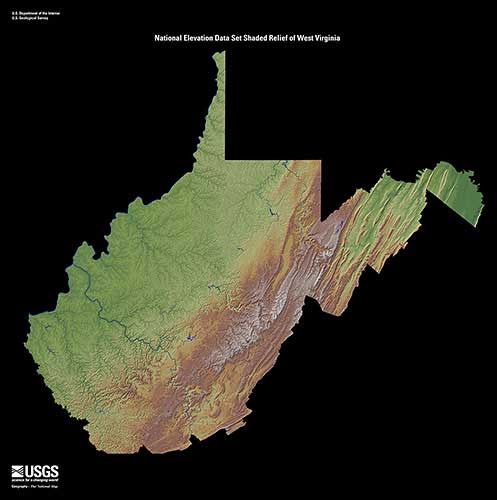Geography
West Virginia is ranked as the 41st largest state in the United States by area, with a population of 1.8 million people (38th). Many geographic features help determine the climate and weather events that are seen across the state. There are three central physiographic regions defined in West Virginia. They consist of the Appalachian Plateau Province, the Mid-Atlantic Province, and the Valley Province.
West Virginia stretches roughly from 37° 11' N to 40° 38′ N
(Latitude) and 77° 49′ W to 82° 38′ W (Longitude); which makes the
state roughly 240 miles wide and 130 miles long.
Less than one percent of the state is considered water, though there are
more than 45 named rivers that cross the state. Some of the major lakes
within the state are Bluestone, Summersville, Sutton, and Tygart. Major
river systems include the Gauley, Kanawha, Monongahela, New, and Ohio
rivers.
The elevation across the state ranges from the lowest point of 240 ft.,
located along the Potomac River to the highest point, located at Spruce Knob
(Pendleton County) of 4,863 ft. Spruce Knob is the summit of Spruce Mountain,
the highest peak in the Allegheny Mountains and highest point in the
Chesapeake Bay Watershed.
The prevailing westerly winds are found between 30˚N and 60˚N, while the
easterly trade winds are located between the equator and 30˚N. These
prevailing winds help steer large scale weather systems and have a significant
impact on the weather and climate of portions of West Virginia.

Source: West Virginia Relief 1 | EROS